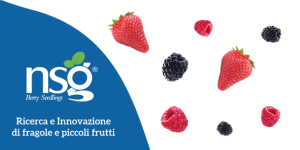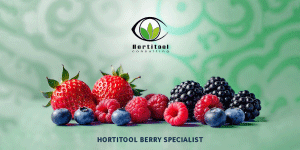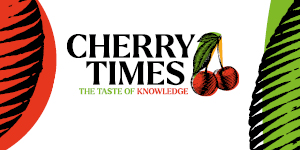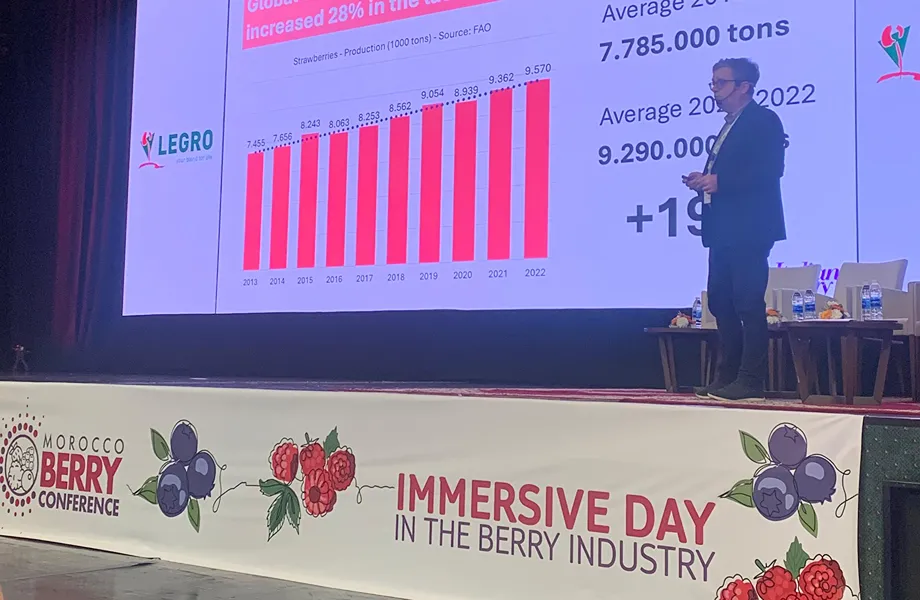Aronia melanocarpa (chokeberry) is a berry native to North America, nicknamed “superfood” for its extraordinary concentration of antioxidants, vitamins, and polyphenols. Its dark berries, similar to blueberries, are valued for their protective effects on the cardiovascular system, immune support, and anti-aging properties.
In Europe, especially in the East, Aronia (chokeberry) has gained new momentum thanks to the health benefits associated with its consumption in juices, supplements, and processed products, becoming a symbol of functional nutrition and natural prevention.
The Native American berry
Aronia (chokeberry), belonging to the Rosaceae family, is native to the cool and wet regions of North America, particularly from central-eastern Canada to the eastern and southern United States. Native American tribes had been using the berries for centuries both as food and as a medicinal remedy.

In the 19th century, Aronia (chokeberry) was introduced to Europe, where it adapted particularly well in Eastern countries such as Poland and Russia, also thanks to its extraordinary nutritional and phytotherapeutic properties.
Poland, the chosen homeland
Today Aronia (chokeberry) is mainly cultivated in Poland, the world’s leading producer with about 90% of global production on more than 6,000 hectares. Cultivation is also widespread in other Eastern European countries (Germany, Austria, Slovenia, Croatia, Serbia, Ukraine) and, more recently, in Italy through pilot projects and crops mainly in Friuli.
The expansion of cultivation is supported by the “superfood” status that the berries have acquired, driving industrial demand for juices, concentrates, and dried products.
The main species
Aronia (chokeberry) grows as a deciduous shrub reaching up to 2 meters in height, with small, oval green leaves that turn bright red in autumn. The white or pink flowers appear in clusters in spring. The fruits are small dark berries, very similar in appearance to blueberries, but with a much more tart and tannic taste.
The main species are Aronia melanocarpa (black chokeberry), Aronia arbutifolia (red chokeberry), and the hybrid Aronia × prunifolia. The plants are hardy, cold-resistant, and highly adaptable, also used for ornamental purposes and hedges.

Food uses
Aronia (chokeberry) is cultivated primarily for the food industry: most of the harvested berries are processed into juices, jams, natural colorants, and supplements. Only a small portion is destined for fresh consumption, due to its very strong and not very sweet taste.
The plant has a high yield and long productive lifespan, often exceeding twenty years. In recent years, short supply chains have been created for the production of high-quality Italian Aronia juices and products.
Aronia cultivation in Europe has had a positive impact in various respects, both environmental and socio-economic.
Spread and economy
Aronia (chokeberry) has become an important crop in Eastern European countries, with Poland as the global leader in production and a growing presence also in Germany, Austria, Croatia, northern Italy, and other EU states.
Interest in Aronia (chokeberry) has increased due to its industrial use in juices, functional products, and supplements, encouraging the development of new local supply chains and creating job opportunities in rural and marginal areas.

The European Aronia (chokeberry) market has evolved thanks to the demand for “superfood” products, with investments in cultivation techniques and in artisanal and industrial processing of the berries.
The main European producing countries of Aronia are Poland, Russia, Ukraine, Germany, Austria, and some Balkan states such as Slovenia, Croatia, Serbia, and Bosnia. Poland is by far the European and world leader, concentrating about 90% of continental production on around 6,000 hectares.
Poland dominates the European scene for tradition, extension, and industry, while other countries such as Russia, Ukraine, and Germany contribute for historical reasons, suitable climate, or interest in health and “niche” products.
Reasons behind the leadership of the main countries
Poland
Favorable climate: Poland offers ideal climatic conditions for Aronia, with cold winters and well-drained soils.
Tradition and research: the fruit was introduced decades ago, with targeted investments in productive varieties and mechanized harvesting techniques.
Domestic market and industry: the extensive industrial use (juices, powders, supplements) and a developed supply chain support large-scale production.
Russia and Ukraine
Historical roots: cultivation has deep roots and has traditionally been used as a medicinal and nutraceutical plant.
Large agricultural area: the presence of vast semi-wild areas favors the expansion of plantations.
Germany, Austria, and the Balkans
Market attentive to superfoods: the growing demand for healthy and organic products stimulates cultivation.
Plant adaptability: Aronia (chokeberry) adapts well to organic farming systems and the use of marginal lands, an important factor in areas less suited to other crops.
Italy
Emerging expansion: Interest is growing in hilly areas of northern and central Italy, favored by crop diversification and demand for superfoods, although the acreage is still limited.
Italian plantations are recent, with the first hectares planted between 2015 and 2018 in the provinces of Gorizia, Bologna, and Ravenna; these required several years of adaptation due to limited agronomic knowledge and the specific needs of the plant.
Market and consumption in Europe
The main markets and consumption destinations for Aronia in Europe are concentrated mainly in the processing industry, with a growing demand also in the health and gourmet segments.

Processing market
Juices and concentrates: The largest share of European production, especially in Poland, is destined for processing into pure or mixed juices, concentrates, and Aronia powders.
Supplements, extracts, and powders: Aronia (chokeberry) is used in nutraceutical products, dietary supplements, capsules, tablets, and powders, exploiting its antioxidant power.
Jams, baked goods, and fermented products: Part of the production enters artisanal supply chains for jams, syrups, healthy snacks, fermented drinks, and baked goods.
Exports and destination markets
Poland: Most of the production is absorbed by the domestic industry and also exported to Germany, Austria, Switzerland, England, Spain, and other European countries.
Eastern Europe and the Baltic States: Local consumption is often preferred due to low prices, but quality and processing are geared toward exporting “premium” products to central and western Europe.
Italy: Consumption is still limited, but is growing thanks to the “Made in Italy” niche focused on certified, organic, and high-quality products, promoted in supermarket chains, organic shops, and gourmet contexts.

Direct food consumption
The direct consumption of fresh berries is marginal due to their astringent taste, while domestic use of dried berries, powders, aronia honey, and small batches of jams is spreading.
In Poland, Germany, and Austria, the consumption of Aronia juices grows every year thanks to consumers’ increasing focus on healthy and natural products.
Reasons for industrial use
The limited shelf life of the fresh berry, its intense flavor, and the high yield per hectare push towards processing rather than fresh consumption.
The health and wellness industry sees the antioxidant properties of Aronia (chokeberry) as a major attraction, supporting the market trend toward supplements and functional foods.
The primary destination of European Aronia production remains processing into juices, supplements, and functional products, with an international market mainly focused on health and “wellness,” but with growth potential in fresh, dried, or gourmet products in Western Europe.

Cultivation challenges
Although Aronia is often considered hardy and resistant, its cultivation presents various agronomic and management challenges that are important to know in order to obtain quality production and maintain investment sustainability.
In summary, the cultivation challenges of Aronia (chokeberry) are linked to soil and climate requirements, slow growth, need for initial investments, vulnerability to pests and some diseases, as well as market competition, thus requiring accurate agronomic strategies and a clear valorization of production.
Crop requirements and soil adaptability
Aronia prefers soils rich in organic matter, with a slightly acidic pH (6–7), well-drained and not excessively clayey or calcareous.
Optimal growth is achieved with full sun exposure and regular irrigation, since the plant is resistant to cold but suffers greatly from drought, which can significantly reduce berry production and quality.
In the first years, it suffers from strong competition from weeds, requiring constant cleaning and good mulching.
Slow growth and initial investment
Aronia grows slowly: full production is reached only after 6–7 years from planting, with significant harvests beginning after the third or fourth year.
The investment per hectare is considerable (up to €35,000–40,000, considering fertigation systems and insect nets), with economic returns spread over time.

Pests, diseases, and risk factors
Although resistant to many diseases, Aronia can be attacked by harmful insects such as Popillia japonica, vine weevil, and brown marmorated stink bug, which, in the absence of protections (nets, traps), can compromise entire harvests.
One of the main dangerous diseases is fire blight (Erwinia amylovora), which can lead to the complete loss of plants if attacked.
Occasionally, molds and fungal infections are reported if the canopy is not well ventilated, and in humid areas mulching is essential to prevent waterlogging and root problems.
Practical management and agronomic needs
Aronia requires regular pruning to lighten the canopy, removing dead branches, suckers, and shoots.
It requires regular fertilization with high-quality organic amendments and preferably a drip irrigation system to ensure proper water supply without wetting the aerial part.
In many cases harvesting is manual, slow and costly (especially in small plantations), while large farms use dedicated machinery, though this reduces product quality selection.
Organic cultivation is well suited to the species, but requires greater attention to weed management and pest protection.
A health champion
Aronia (chokeberry) is renowned for its health properties: it boasts one of the highest concentrations of anthocyanins and polyphenols among fruits, with strong antioxidant activity. It is rich in vitamin C, vitamin K, iron, potassium, and fiber; regular consumption of Aronia (chokeberry) juice or extract helps strengthen the immune system, protect the heart and blood vessels, reduce cholesterol and blood pressure, and, thanks to quinic acid, prevent urinary tract infections.
Scientific studies also suggest beneficial effects on blood sugar control and in the prevention of metabolic syndrome and chronic inflammatory conditions.
Photo: Aronia Fruits et al.









